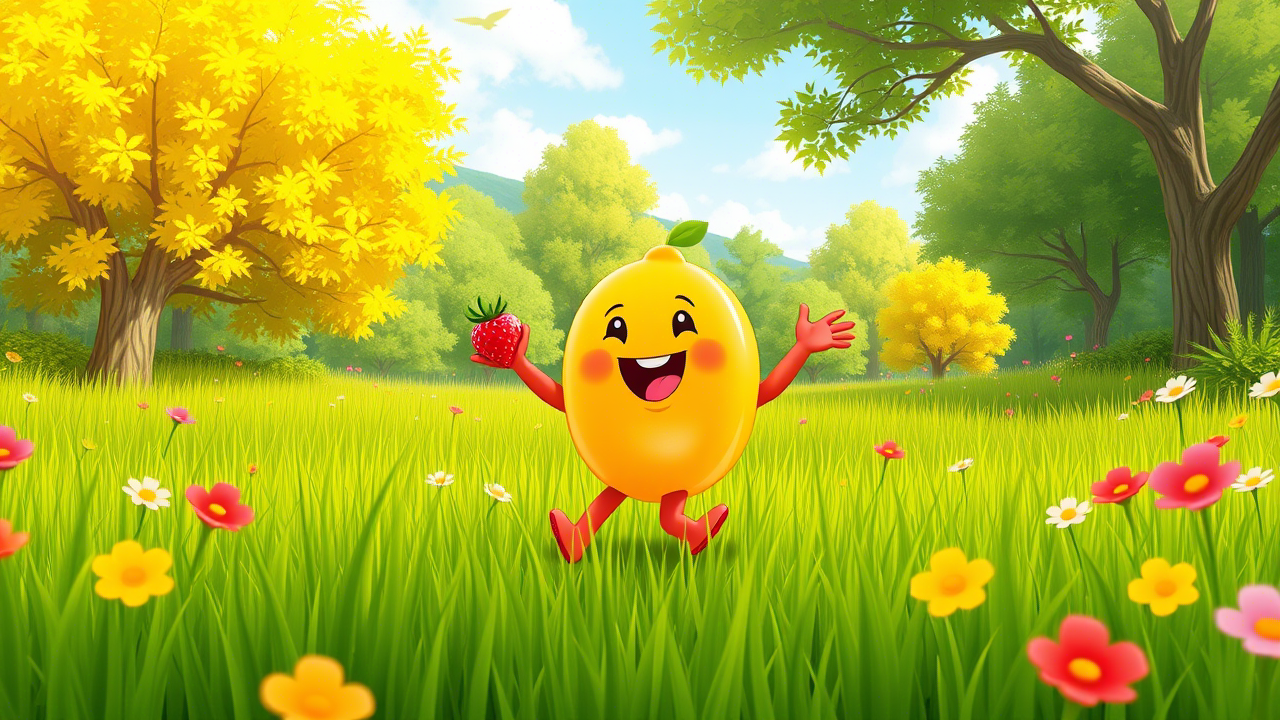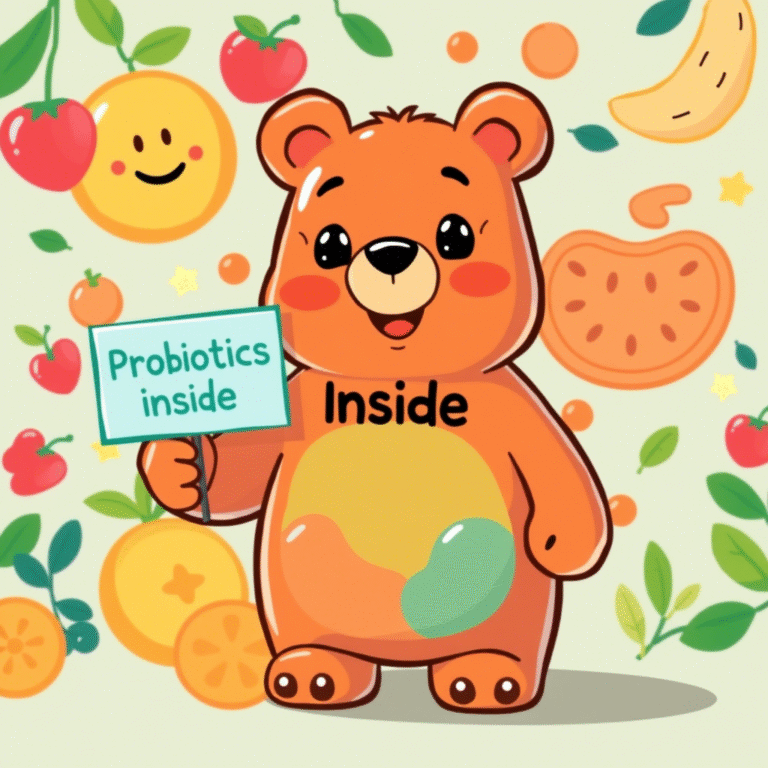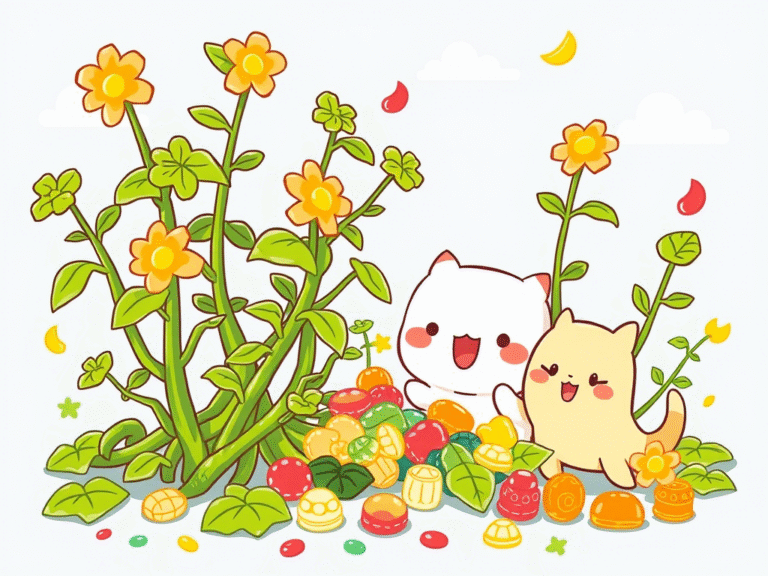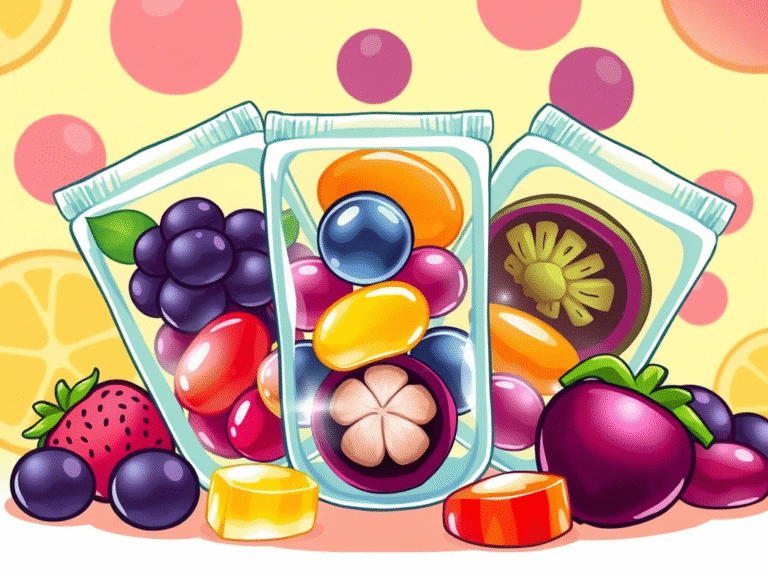Are Plant-Based Gummies Better for the Planet?
Yes, plant-based gummies are kinder to the planet.
They’re made with sustainable ingredients, they decrease greenhouse gas emissions and they often arrive in eco-friendly packaging.
If you’re wondering how a small candy can do so much, read on.
Why Should You Care About Gummies?
But here is a confession: I am a gummy lover.
The chewiness, the gush of fruit flavor — what’s not to like? But as a person who cares about the environment, I’ve long been curious about how my snacking choices are affecting the planet.
Could my favorite candies secretly be bad for the planet? That’s when I discovered plant-based gummies.
These little treats claim to be gentler on the Earth — but are they? Spoiler alert: Yes, they are. But let’s also go a bit further in considering why that’s important.
Candy may not strike you as a significant part of the larger environmental picture, but consider this soul-numbing fact: The confectionery sector produces millions of gummies every day.
All those bites really add up. So if there’s a way to consume our snacks with minimal harm to the planet, shouldn’t we?
What Makes Traditional Gummies Harmful?
Regular gummies typically contain gelatin, which is a thick, gooey gel derived from animal collagen.
Those classic gummies get their signature chewiness from gelatin. But there’s a catch: gelatin is an animal agriculture product.
And believe me, animal agriculture is not a planet’s best friend.
Animal Agriculture’s Dirty Secrets
Animal agriculture is a major contributor when it comes to greenhouse gas emissions. Consider: Livestock requires enormous expanses of land, water and energy to raise.
Fun Fact: Animal agriculture alone is responsible for 14.5 to 18% of all GHG emissions on the planet. That’s more than all the cars, planes and ships in the world combined.
Then there’s deforestation. To create space for grasslands or to cultivate animal feed, forests are felled at alarming rates.
This not only releases stored carbon dioxide into the atmosphere – causing it further warming – it also trashes a myriad of homes for countless species.
Water usage is another issue. Making gelatin-heavy gummies requires a lot more water than its plant-based counterparts.
So there you have it, traditional gummies might taste amazing, but their environmental cost can be a tough one to swallow.
How Do Plant-Based Gummies Help?
Now, let’s discuss the heroes of this story: gummies made of plants. Instead of gelatin, these candies rely on pectin, agar-agar and konjac.
They’re not just fancy names — they have the potential to transform sustainability.
Sustainable Ingredients That Make a Difference
Pectin is derived from fruits, like apples and the peels of citrus. Agar-agar comes from algae, while konjac derives from root vegetables.
None of them necessitate animal farming, and hence have a radically lower environmental footprint.
No animals killed, no wasteful land use, and far fewer emissions.
One repeat player: hemp. Some vegan CBD gummies include hemp, which is amazing for the environment.
Hemp plants are capable of sequestering as much as 15 tonnes of CO₂ per hectare. That’s like a little forest on the bottom of your candy bag!
Also: hemp tends to grow like a weed, consumes less water than other crops, and restores health to soils by depositing nutrients.
And here’s another victory: the good stuff is organic and responsibly sourced in the case of many plant-based gummy brands.
Not using pesticides to grow foods, for example, reduces consumption of pesticides, maintains pollinators and biodiversity.
It’s a win-win for people and the planet.
Packaging That Loves the Planet
You have to unwrap a gummy from its plastic packaging, if you’ve ever done that.
One of our biggest environmental challenges right now is plastic waste and obviously, the confectionery industry is one of the culprits.
But plant-based gummy makers are now stepping up.
Saying Goodbye to Plastic Waste
A number of plant-based gummy makers are making the charge with biodegradable packaging.
I’m talking biodegradable wrappers, compostable toothbrushes and recyclable options.
When you choose these brands, you’re making a difference in the mountains of plastic waste filling our oceans and landfills.
For example, some brands now are using plant-based plastics derived from cornstarch or sugarcane.
These materials degrade organically and do not release any toxic by products. Some are choosing paper-based packaging that is fully recyclable, for example.
This one is a breath of figurative fresh air compared to the single-use plastics that fill most traditional gummy products.
Consumer Demand Is Driving Change
And here’s the exciting part: people like you and me, who are consumers, are asking for better.
There is an increased awareness about feeding and its impact, both on the wallet and on the Earth.
This pivot can be seen in the rapidly expanding plant-based gummy market.
A Growing Market
The global organic gummy worms market alone is anticipated to surpass $439.4 million by 2025 with a compounded annual growth rate (CAGR) of 6.2% during 2025-2035.
Why? Because consumers are looking for clean-label, sustainably packaged, plant-based snacks.
This trend is supported by consumer surveys. More than 60% of the UK population, 70% of Germans and a huge 85% of Spaniards choose plant based gummies.
These numbers demonstrate that plant-based options are more than a trend; they are a movement.
The plant-based gummies are also now synonymous with healthier and more sustainable options. And who wouldn’t want that?
Breaking Down the Numbers
To really get a sense of the distinction, let’s take a look at plant-based and traditional gummies side by side. Here’s a helpful chart to help you parse it all:
| Factor | Plant-Based Gummies | Traditional (Gelatin) Gummies |
| Main Gelling Agent | Pectin, Agar, Konjac | Animal Gelatin |
| Greenhouse Gas Impact | Lower | Higher (due to animal agriculture) |
| Water Use | Lower | Higher (livestock needs) |
| Packaging | Often eco-friendly | Often plastic-based |
| Consumer Demand | Rapidly growing | Stable |
| Market CAGR (2025–35) | 6.2% (organic/plant-based) | Lower |
As you can see, plant-based gummies win out in nearly every category!
They are made from more sustainable ingredients, emit fewer gases, save water and attract eco-aware consumers.
Traditional gummies remain far, far behind, bogged down by their dependence on resource-intensive animal farming.
Key Stats That Tell the Story
Here are a few eye-catching statistics about the growing kingdom of plant-based gummies:
- 50% of Revenue: More than half the global vegan gummy candy market revenue is contributed by plant-based gummies. That’s a big slice of the market, and it shows how over and over there these snacks are.
- Hemp’s Carbon Superpowers: Once more, hemp can sequester up to 15 tonnes of CO₂ per hectare. Just think of the good that could come of more gummy companies embracing this super ingredient.
- Market Share Leaders: Brands such as YumEarth have taken over Organic, with as much as 22% share of the market. Their success is evidence that people are willing to pay premiums for quality and responsible goods.
Let’s be real for a second, though: These statistics tell us something we already know—gummies have evolved from a super niche category to a candy industry disruptor.
Why Should You Make the Switch?
At this point, you might be thinking: “Well, what’s stopping me from buying plant-based gummies?”
Honestly, nothing. Since these candies have all the good stuff you enjoy in traditional gummies (like tasty flavor, fun shapes and bright colors), but with less parking on the planet, I’d say it’s a win-win.
And supporting plant-based brands is a message to the industry.
When businesses see demand for eco-friendly products, they are more likely to innovate, and invest in more such products. Your choice matters.
Final Thoughts
About this itemVegan gummies are an easy and delicious way to consume your favorite treat and also maintain your commitment to saving the planet.
They’re tasty, sustainable and increasingly sought after around the world. You haven’t tried them yet, have you?

I’m Kai, a fitness fiend and wellness geek from Vancouver. I love helping people find small, sustainable ways to feel better every day. From workouts, to good mental health, to smoothie recipes, I keep it real. Perfection is not my thing — progress is. When I’m not at the gym, I’m likely to be hiking or sampling a new meditation app







